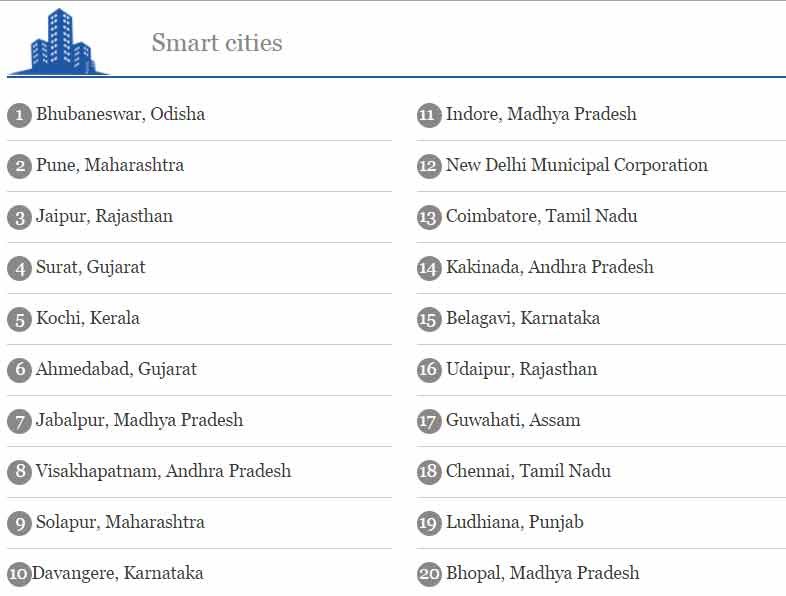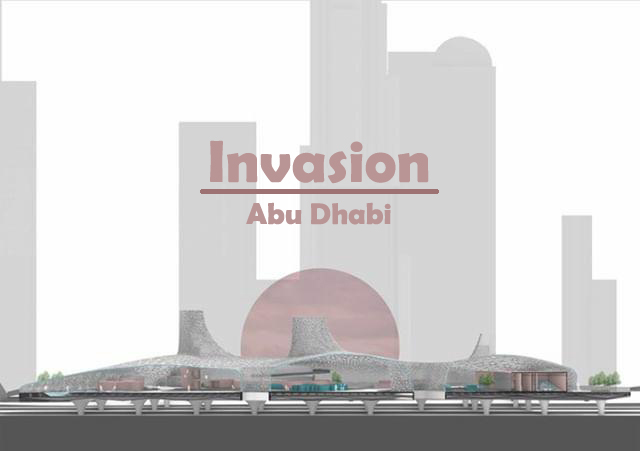
Smart Cities : A new path to Urban Development
Smart Cities : A new path to Urban Development
If anyone has any doubt that the cities of the world are growing, then they only have to look at all the telling statistics linked to this. The World Health Organization provides some figures that strongly highlighted this trend. According to the WHO, a hundred years ago, 2 out of every 10 people lived in an urban area. As of 2010, more than half of the people lived in an urban area. By 2050, it is estimated that this proportion will increase to 7 out of 10 people.
- Galloping growth in urban population
An “Urban Area” is a location characterized by high human population density and vast human-build features in comparison to the areas surrounding it. In 1950, the world’s population living in urban area was 746 million and in 2014, it reached 3900 million out of 7250 million which accounts for 54% of world’s total population. It is expected that by 2050, the urban population will reach the staggering figure of 6400 million.
In 1901, the Indian urban population was 11.4% of the total population and in 2011, it was 31.16%. It is predicted that by 2030 it will reach 40.76% and may cross 50% by 2041. All above statistical figures imply that the urban areas are dynamic, fast-changing, thereby creating a huge demand for infrastructure development.
- Cities-Growth engines of any Nation
The cities are the engines of growth for the economy of every nation. As per the census of India 2011, 31.16% of India’s population lives in urban areas contributing 63% of India’s GDP. It is expected that by 2030, urban population will reach 40.76% contributing to 75% GDP. This growth can be achieved by comprehensive development of physical, institutional, social and economic infrastructure. The growth of a city depends on improving the quality of life, attracting resourceful people and huge investments.
- Definition of “Smart City”
There is no universally accepted definition of “Smart City”. It means different things to different people. The conceptualization of smart city therefore varies from city to city and country to country, depending on the level of development, willingness to change and reform, resources and aspirations of the city residents. A smart city would have different ideas or opinions in India than in any other country. Even in India there is no one way of defining a smart city.
A smart city uses Information and Communication Technologies (ICT) to enhance the quality and performance of urban services and to reduce costs and resource consumption and to engage more effectively and actively with its citizens. Sectors that have been developing a smart city includes government services, transport and traffic management, energy, healthcare, water and waste water treatments, solid waste disposal and eco system etc. Smart city solutions are to be developed with a goal of improving the management of urban administration, allowing for real time responses to challenges efficiently than one with simple ‘transactional’ relationship with its citizens.
For a citizen of India, a smart city contains certain aspirations with regard to infrastructure and services. To realize these aspirations, the urban planners and architects have to aim at developing the eco-system founded on the four pillars of comprehensive development- institutional, physical, social and economic infrastructure. It is a long term goal and can be achieved incrementally, adding on layers of ‘Smartness’.
- Requirements of “Smart City”
The core infrastructure elements in a smart city as per Indian Ministry of Urban Development (MoUD) mission statement and guidelines include,
- Adequate water supply
- Assured power supply
- Sanitation including waste management
- Efficient urban mobility and public transport
- Affordable housing (especially for the urban poor)
- Robust IT connectivity and digitalization
- Good governance (e-governance and citizen participation)
- Sustainable environment
- Safety and security of citizens (particularly women, children and elderly)
- Satisfactory Healthcare and Education for all
The purpose of creating smart cities is to drive economic growth and improve the quality of people enabling local area development, transformation of existing areas (retrofit and redevelop) including slums into better planned areas by using the latest technologies. Application of smart solutions will enable cities to use technology, information and data to improve infrastructure and services.
- General features of a “Smart City”
Each city has unique features and comprehensive development sectors based on the characteristics of a city. However general features of a smart city as per guidelines of MoUD are described below:
- Land Use: Planning of Land use contains a range of compatible activities, close to one another in order to make land use more efficient.
- Housing and Inclusiveness: The housing facilities are to be expanded to all, including slum dwellers and urban poor.
- Promoting Walkable localities: To reduce congestion, air pollution, resource depletion, to boost local economy, to promote interaction and ensure security the walkable localities needs to be developed. The road network has to be created for free and safe movement of pedestrians and cyclists. Many services are to be offered within walkable distances.
- Preserving and developing green and open spaces: In cities, playgrounds and recreational spaces are to be provided to enhance the quality of life for citizens, to reduce urban heat effects to promote eco-balance.
- Variety of transports: The citizens are to be offered with a variety of options for their movements including pubic transport, mass transit systems and hassle free hiring facilities.
- Citizen friendly governance: The citizens are to be offered many online services to bring out accountability, transparency and encourage them to avail these facilities on mobile, without having to go to government offices, to respond more e-mail enquiries, SMS feedbacks, grievance redressal, monitoring the programs and activities online etc.
- Identity to the city: Every city has some uniqueness in its economic activity such as local cuisine, healthcare, education, arts and crafts, culture, goods market, hosiery, tourism, industries, heritage etc. By finding the uniqueness, an identity has to be given to the city.
- Smart solutions to the needs: For development of infrastructure and to provide services to citizens, innovative ideas are to be employed by making areas less prone to disasters, use of fewer resources, inexpensive and user friendly services etc.
- Smart City Mission
The government of India has envisaged a Mission to develop 100 smart cities within duration of five years (FY 2015-16 to FY 2019-20). This mission may be continued after the evaluation to be done by the MoUD incorporating the lessons learnt in the Mission. With the above goals and concepts, the Government of India has already selected 100 cities through a selection process in Stage 1, out of which 20 cities are selected for financial grant and fast track implantation through a selection process in Stage 2.
- Implementation and Monitoring
The implementation of a Smart City Mission at the city level will be done by a Special Purpose Vehicle (SPV) created for the purpose. The SPV will plan, apprise, approve, release funds, implement, manage, operate, monitor and evaluate the smart cities development projects. Each smart city will have a SPV which will be headed by a full time CEO and have nominees of central government, state governments and ULB’s on its board. The state/ULB shall ensure that (a) a dedicated and substantial revenue stream is made available to the SPV so as to make it self-sustainable and evolve its credit worthiness for raising additional resources from the market, and (b) government contribution for smart city is used only to create infrastructure for public benefit outcomes.
The central government proposes to give financial support to the Mission to the extent of INR 48,000 crore over five years, on an average of INR 100 crores per city, per year with an equal amount of matching grant from State/ULB. The Mission is monitored by an Apex Committee (AC) at the national level. A state level ‘High Powered Steering Committee’ (HSPC) would steer the Mission programme. Also a ‘Smart Cities Advisory Forum’ (SCAF) will be established at the city level.
List of first 20 Smart Cities of India –

For more details on upcoming Smart cities in India visit www.smartcitiesindia.com and/or www.smartcities.gov.in and/or www.smartcitieschallenge.in.



